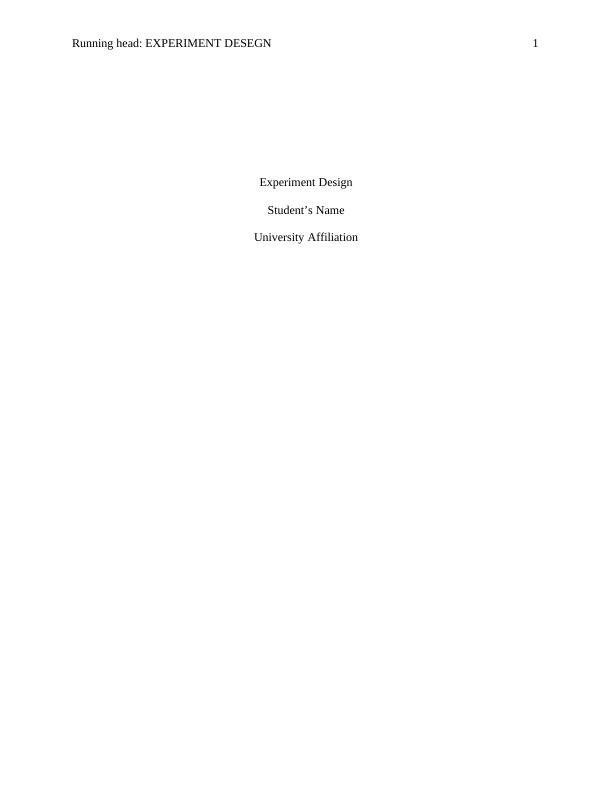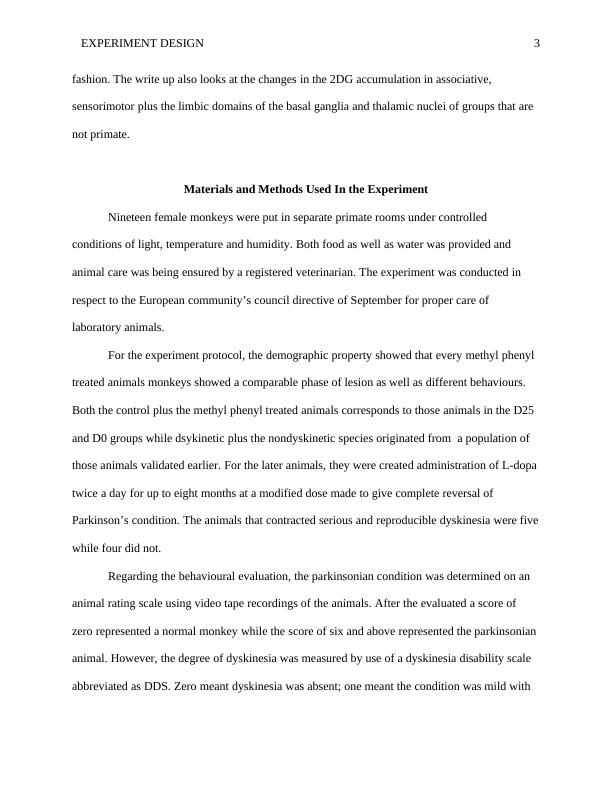Ask a question from expert
L-dopa Induced Dyskinesia: a Neuropathological Approach
10 Pages2566 Words382 Views
Added on 2020-04-13
About This Document
EXPERIMENT DESEGN1 EXPERIMENT DESIGN 10 Experiment Design Student’s Name University Affiliation of the Basal Ganglia Domains (Limbic, Associative and Sensorimotor) In Induced Dyskinesia Introduction The management of Parkinson’s illness people with a dopamine precursor like the L-dopa boosts the growth of severe changes in motor response as well as involuntary movements referred to as L-dopa induced dyskinesia, a serious complication of L-
L-dopa Induced Dyskinesia: a Neuropathological Approach
Added on 2020-04-13
BookmarkShareRelated Documents
End of preview
Want to access all the pages? Upload your documents or become a member.


